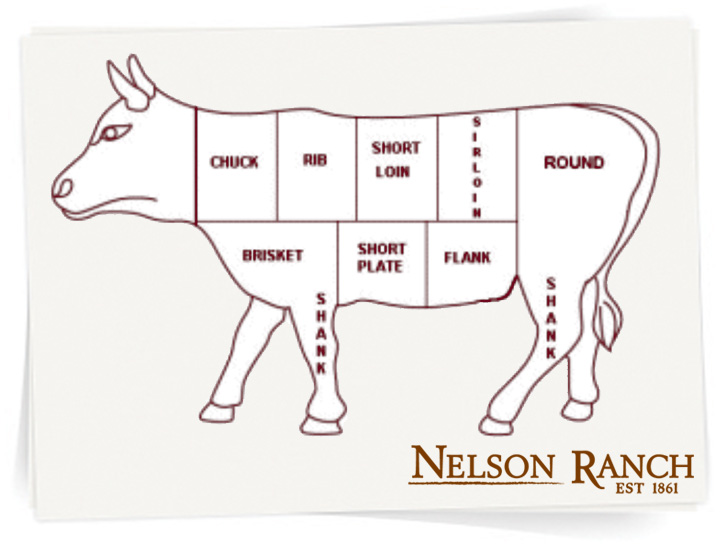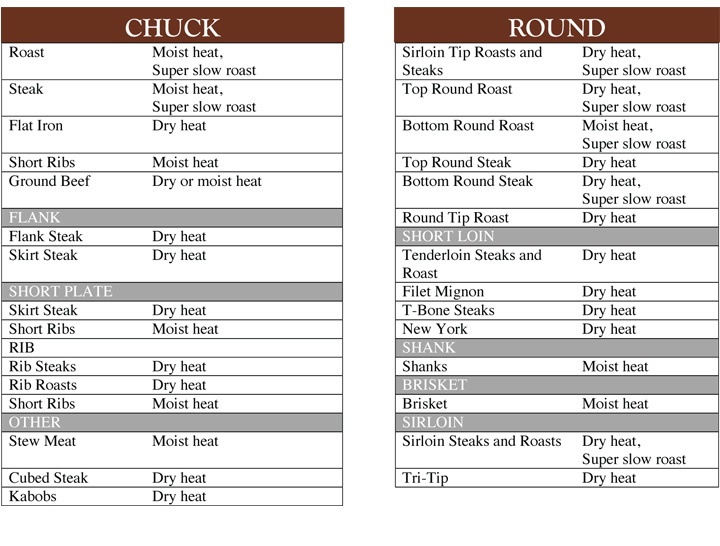Cuts of Beef and Ideal Cooking Methods
Cooking Tips
Slow Down
Grass-fed beef needs to be cooked slower and some prefer to cook it with oil and water.
Lower Heat
Grass fed beef cooks faster. When grilling burgers and steaks cook over a medium flame.
Cooking Techniques
Learn when to use dry-heat cooking methods and when to use moist-heat methods.
Don’t Overcook
Put away your timer, get a good meat thermometer, and be prepared to use it. The Grassfed Gourmet Cookbook suggests internal temperatures of 120-165 degrees and the USDA recommends 140-170 degrees.
Dry Heat
This is the process whereby fats and water are pulled from the meat, thus firming it up until it reaches the desired doneness. Dry-heat methods include pan-frying, broiling, roasting, barbecuing, grilling, stir-frying, and sautéing. Dry-heat cooking methods are appropriate for tender cuts of meat, such as the loin cuts, because those come from the animal muscles that do the least work.
Moist Heat
Moist-heat methods are used for tougher cuts of meat and include braising, stewing, crock-pot cooking, and boiling. Tougher cuts typically come from the animal parts that do a lot of work, such as the shoulders. When muscles do a lot of work, they develop a connective tissue protein called collagen, which is what makes the meat tough. When a cut of meat contains collagen, your job as the chef is to break down the collagen, thus making the meat tender.
Super-Slow Roast
In this technique, tougher cuts of meat are put in the oven at 170 degrees and allowed to roast for several hours. The resulting meat is extremely flavorful and juicy, because the juice does not escape at such low temperatures. Meats cooked using this method hold their temperature much longer after they leave the oven. It also reduces the likelihood that the meat will be overdone. Meats



